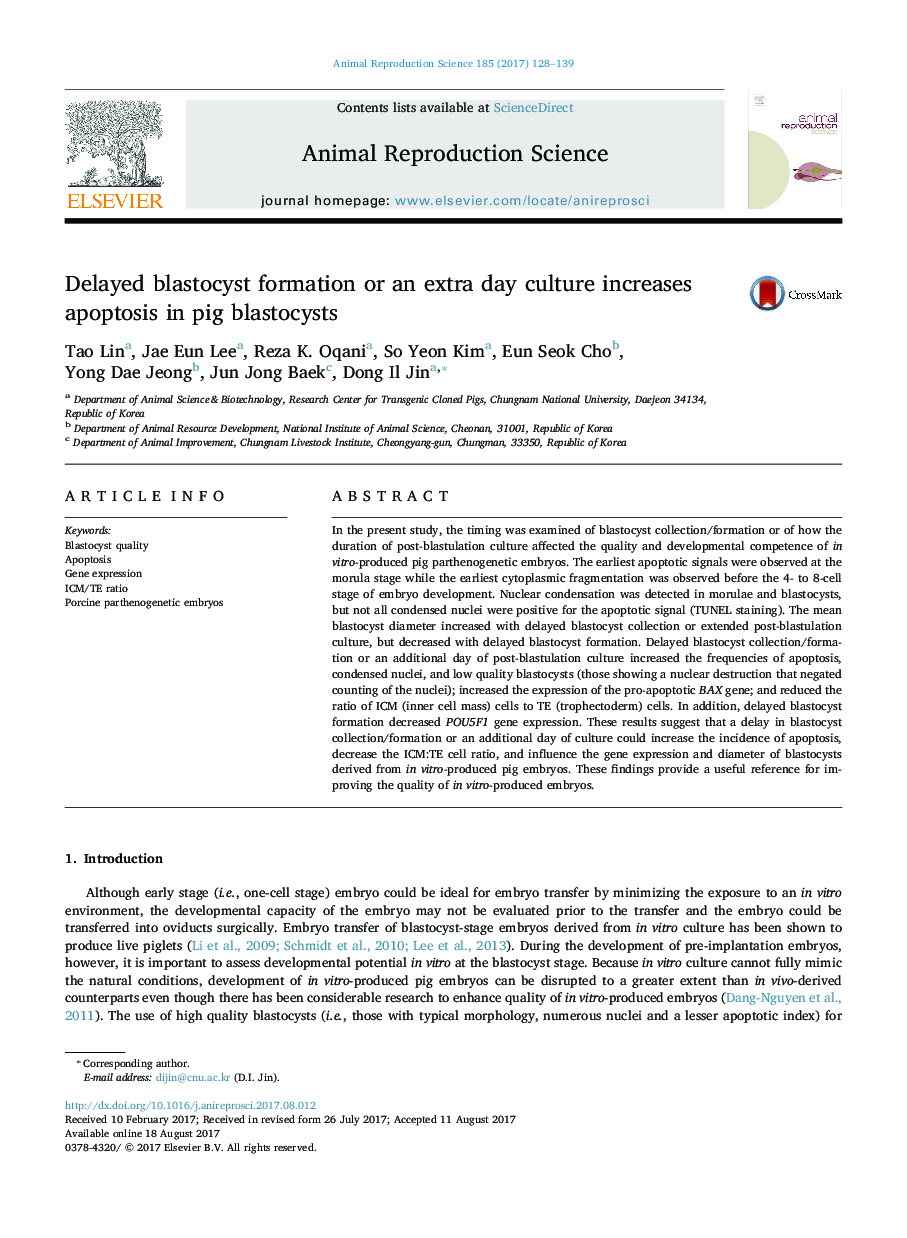| Article ID | Journal | Published Year | Pages | File Type |
|---|---|---|---|---|
| 5520208 | Animal Reproduction Science | 2017 | 12 Pages |
In the present study, the timing was examined of blastocyst collection/formation or of how the duration of post-blastulation culture affected the quality and developmental competence of in vitro-produced pig parthenogenetic embryos. The earliest apoptotic signals were observed at the morula stage while the earliest cytoplasmic fragmentation was observed before the 4- to 8-cell stage of embryo development. Nuclear condensation was detected in morulae and blastocysts, but not all condensed nuclei were positive for the apoptotic signal (TUNEL staining). The mean blastocyst diameter increased with delayed blastocyst collection or extended post-blastulation culture, but decreased with delayed blastocyst formation. Delayed blastocyst collection/formation or an additional day of post-blastulation culture increased the frequencies of apoptosis, condensed nuclei, and low quality blastocysts (those showing a nuclear destruction that negated counting of the nuclei); increased the expression of the pro-apoptotic BAX gene; and reduced the ratio of ICM (inner cell mass) cells to TE (trophectoderm) cells. In addition, delayed blastocyst formation decreased POU5F1 gene expression. These results suggest that a delay in blastocyst collection/formation or an additional day of culture could increase the incidence of apoptosis, decrease the ICM:TE cell ratio, and influence the gene expression and diameter of blastocysts derived from in vitro-produced pig embryos. These findings provide a useful reference for improving the quality of in vitro-produced embryos.
